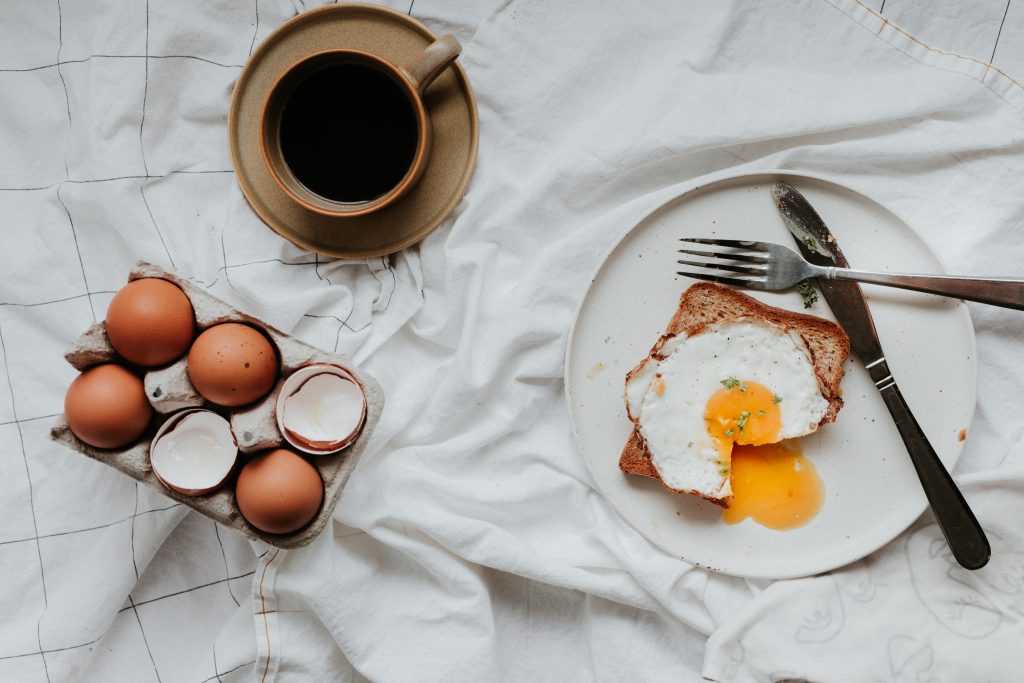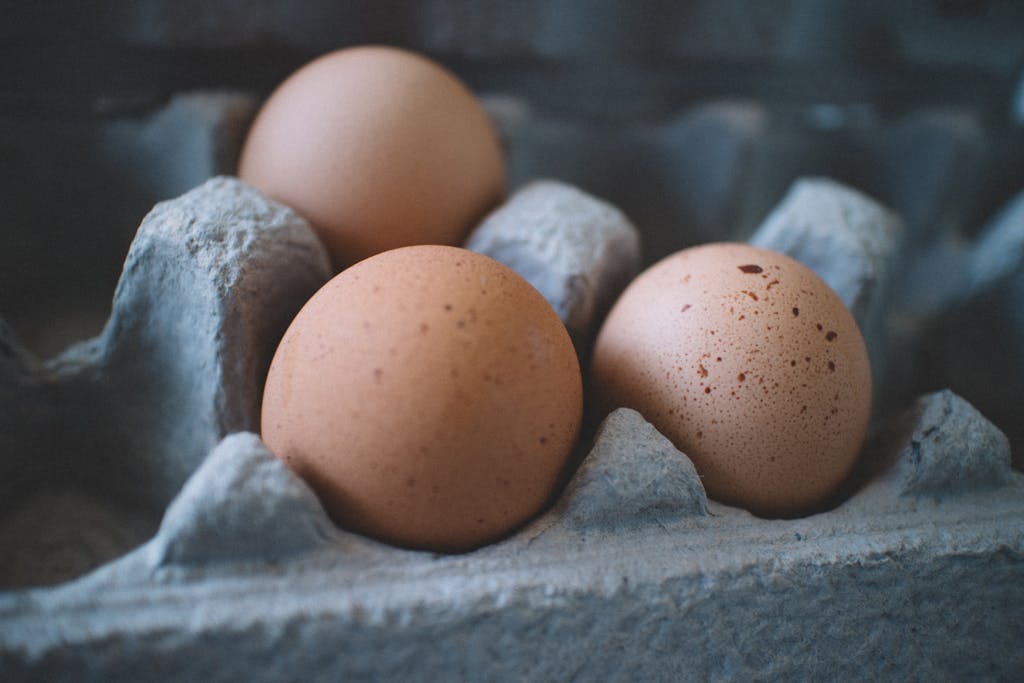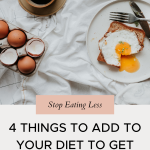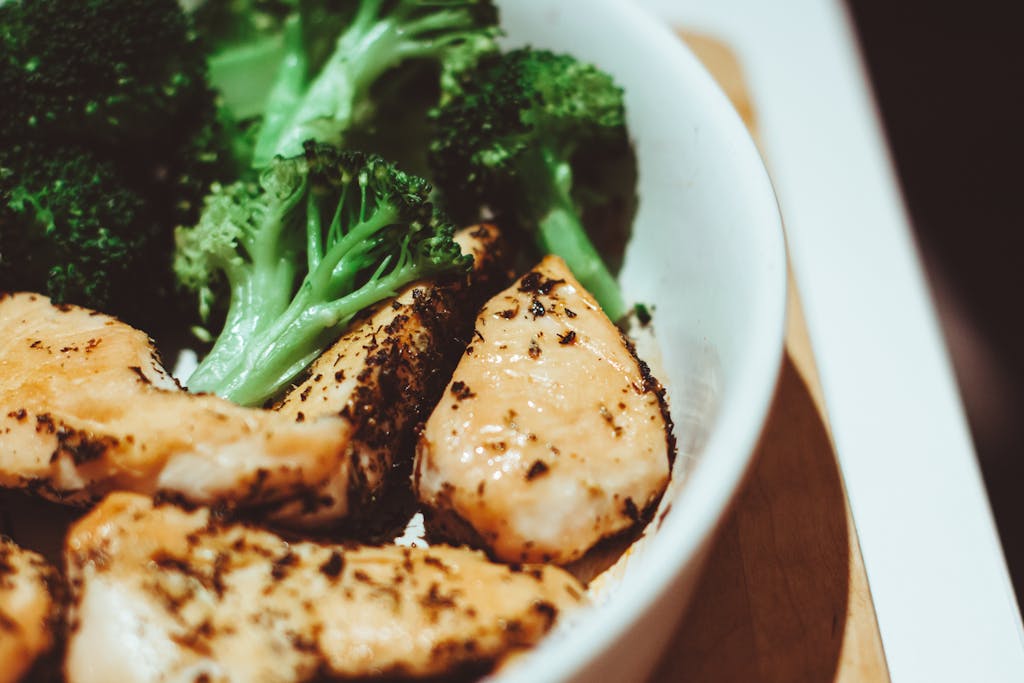4 Things to Add to Your Diet to Get Results
Ok, you’re working out consistently, and you feel like you’ve got a handle on the gym. But what about your diet? There’s so much information out there these days. What works? Should I cut carbs, go vegan, or try intermittent fasting? Should I track macros? “Wait, what are macros? And how do I track them?” While all of these are viable options and no doubt have had success for some people, they can be extremely daunting for others. And even more daunting to stick to long term. So, what can you do today that will put you on track to better health and success in your fitness journey?
Less Does Not Equal Better
What do low-carb, vegan, and intermittent fasting all have in common? They are restrictive and usually a big jump from your current diet. Low-carb diets involve restricting carbs in attempts to regulate blood sugar. Vegan diets restrict all animal products… and let’s be real…meat tastes good. Intermittent fasting, while beneficial, involves changing your eating schedule, which may not work for you right now. All of these diets involve drastic changes. But what if you add things to your current way of eating instead of making drastic changes and restricting yourself? I know what you’re thinking, “you want me to add food? Isn’t that counter-productive? Don’t I need to cut calories to lose weight and be healthy?” Not necessarily!
Chances are you’ve tried a diet that restricts calories or food groups, and maybe you saw some progress. But what happened when you stopped eating that way? What happened when you started eating meat again, or you added carbs? You gained the weight back, and probably even more. So instead of eliminating things from your diet, how about you add these 4 things!
Add More Protein
Protein, protein, protein! I’m sure you’ve heard it a million times, but why is it so important? And why do fitness professionals keep emphasizing eating more of it? Well, it comes down to muscle. Protein is the building block of muscle and adequate protein intake is essential for maintaining lean body mass (aka muscle) and for building new muscle.

How does this impact your health and fitness? Having more muscle mass speeds up your metabolism, allowing you to burn more calories at rest. It also helps regulate body fat. When you’re not consuming enough protein, you may lose weight, but you are probably losing a good amount of muscle, which is not ideal. You may have lost weight when you did a super restrictive diet, but you probably didn’t realize that you also lost a lot of muscle. Then, when you stopped dieting, you regained the weight, most of which was body fat. So not only did you lose muscle, but you also gained back extra body fat. Then, the next time you try to lose weight again, it’s even harder. Well, that’s because you’ve lost muscle, which has damaged your metabolism, making it harder to burn body fat. By consuming a diet high in protein, you are able to preserve lean body mass while losing body fat.
As we age, we gradually lose muscle mass at a rate of 3-8% per decade after age 30. This rate gets higher once you hit age 60. This is why eating adequate protein and incorporating strength training is important at any age. Having muscle allows our bodies to stay strong and function optimally.
So, how much protein should you be eating? While the recommended dietary intake for sedentary adults is 0.36 grams per pound of body weight, this is the bare minimum to not become deficient. Studies show that more protein is necessary for active adults looking to build muscle and improve body composition and adults over age 65. In this case, you should consume anywhere from 0.8 grams to 1 gram per pound of body weight. If you are 130 pounds, you would consume anywhere between 104 and 130 grams of protein per day. If weight loss is your goal and you have a significant amount of weight to lose, use your goal weight to determine your protein needs.
Drink More Water
So many times I’ve asked clients how much water they’re consuming and they simply say “Oh yes I drink a lot of water, all I drink is water”. But then I tell them how much water they should be drinking and they are shocked! You should be consuming about half your body weight in ounces. So that means if you are 160 pounds, you should drink at least 80 ounces of water daily. So ask yourself, are you indeed drinking enough water? If the answer is no, water is a great place to start. Especially if you are physically active or sweat a lot, in which case you would ideally drink an additional 15-20 ounces.

So why is water so important? The body is primarily made up of water. All of the systems in your body depend on water to function properly. Water can also aid in weight loss. It acts as a natural appetite suppressant, curbing cravings or preventing overeating. It also aids in fat metabolism and exercise performance. When dehydrated, your body tends to hold on to extra fluids and waste.
Add More Color
If you took a picture of your meals throughout the day, would they be bright and vibrant? Or just shades of brown from the meat and starches you are eating? Well, color is a great way to add diversity and nutrients to your diet. Did you know that the colors of your foods indicate the vitamins and nutrients they contain? You may be familiar with the beta carotene in orange fruits and vegetables such as carrots and oranges.
But what do the other colors mean?
- Red fruits and vegetables such as apples, strawberries, pomegranates, and tomatoes contain vitamin C, Vitamin A, potassium, and antioxidants.
- As mentioned, yellow and orange fruits and vegetables contain beta-carotene, which is known to enhance vision. They are also high in vitamin C, vitamin A, and potassium, which can boost your immune system. Think oranges, carrots, bananas, peaches, squash, mango, and pineapple.
- Mushrooms, bananas, onions, and other white fruits and vegetables are suitable for the heart and help to control cholesterol levels.
- Green fruits and vegetables are packed with potassium, calcium, and vitamin K, which helps with blood clotting. Dark green leafy vegetables have the highest concentration of antioxidants and fiber.
- Blue and purple fruits and vegetables, such as cranberries, blueberries, purple grapes, and eggplant, help with urinary tract health and promote healthy aging.
Besides all the vitamins and minerals, diversifying the foods we eat also benefits our gut microbiomes. I’m sure you’ve heard all the rage around taking probiotics and prebiotics to aid digestion and gut health. But what if you could get all those benefits by diversifying the kinds of fruits and vegetables you eat daily?

Add More Fiber
This leads us to fiber! Fiber is probably the most overlooked nutrient. If I asked you how much fiber you consume on a daily basis, would you know? Chances are probably not. And I’m willing to bet if you tracked your daily fiber intake, you’d probably be surprised to see it’s not as much as you think. Women should eat between 21-25 grams of fiber per day. Males should aim for between 30 and 38 grams per day. But why is fiber important?
Fiber is a carbohydrate that the body can’t digest; instead, it passes through the body undigested. Fiber helps regulate blood sugar and keeps hunger levels in check. There are two types of fiber: soluble fiber, which dissolves in water, can help lower glucose levels and blood cholesterol. Foods with soluble fiber include oatmeal, brussels sprouts, black beans, avocado, and flaxseed. Insoluble fiber, which does not dissolve in water, can help food move through your digestive system, promoting regularity and preventing constipation. Foods with insoluble fibers include wheat bran, berries, whole grains, fruit with skin, and brown rice.
So, what can you start today?
Getting healthy and improving your nutrition does not always mean depriving or restricting yourself. Changing small aspects of your diet will ultimately lead to healthier habits overall. So, what can you do today?
Increase protein- a good rule of thumb is 0.8-1 gram per pound of lean body mass. However, if you don’t want to weigh and measure your food, use the palm of your hand as a guide. Each meal should contain a protein serving about the size of your hand. If you have snacks between meals, try to include high-protein snacks such as Greek yogurt, protein shakes/smoothies, and cottage cheese.
Drink half your body weight in water– Buy a reusable water bottle and take it with you everywhere. Try to drink at least 8 ounces of water before your morning coffee.
Add color- Try to get at least 8 servings of color a day by adding fruits and vegetables to each meal
Don’t forget about fiber- Aim for at least 25 grams of fiber daily, which should be easy since you’re already eating so many colorful fiber-rich foods!
Establish Healthy Habits
Remember, changing your diet does not have to mean restriction. Start slowly by making small changes to the way you are currently eating. By making small healthy changes, you avoid feeling deprived and can stick to these habits long-term, which equals long-term results.









